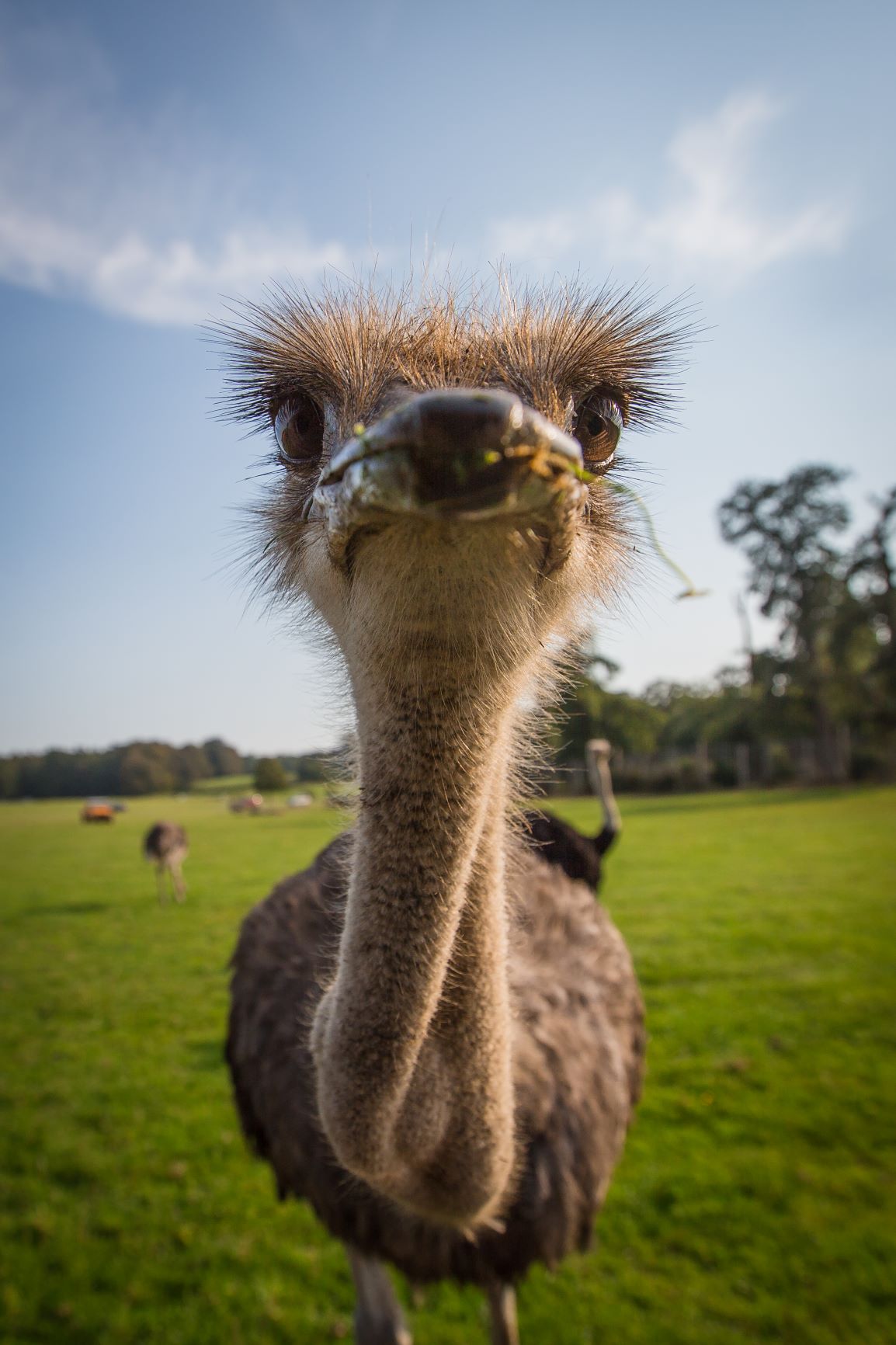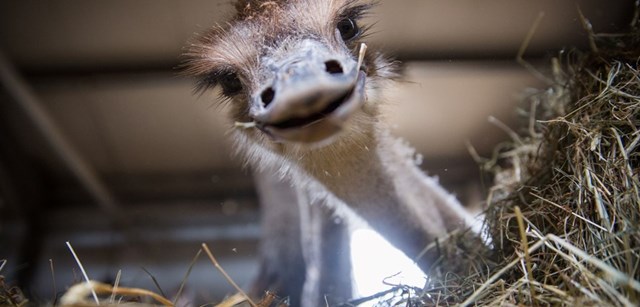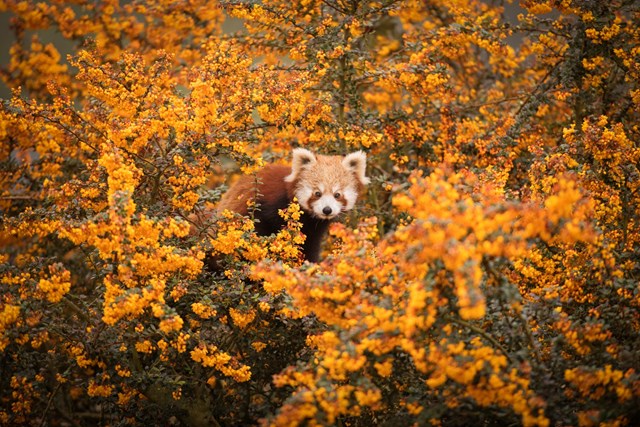Overview
The common ostrich is a large flightless bird, native to Africa. They are the fastest birds on land, with the ability to run at 43mph!
The ostrich at Woburn can be found roaming freely within the Savannah Grasslands reserve.

All about us
| Distribution: | Central and Southern Africa |
|---|---|
| Habitat: | Open woodland or semi-arid plains |
| Height: | Males between 2.1-2.8m | Females between 1.7-2m |
| Weight: | 63 - 140kg |
| Gestation Period: | 35 - 45 days |
| Lifespan: | Up to 40 years |
| Threats: | Habitat destruction, hunted for feathers, skin, and eggs |
About us
Scientific name: Struthio camelus
Woburn Safari Park is home to a flock of ostrich which free roam alongside a number of other African species including the Southern white rhino, eland antelopes, and Grevy's zebra in the Savannah Grasslands Reserve of the Road Safari.

The common ostrich typically eats plants, roots, and seeds but they have also been known to eat insects, lizards, and rodents. They will eat almost anything if necessary.
The ostrich is a very social bird and during the breeding season, they can be seen in flocks of up to 50 birds! During the rest of the year, they live in small flocks and can often be seen grazing in the company of other species, including antelopes and zebras.
Ostriches are ready to start reproducing from three to four years old.
The male will use his bold coloured feathers to attract the female. He will bow his head and begin to shake his feathers, alternating which wing he is shaking, while his tail feathers move up and down at the same time to attract the female.
The male will often choose three to five females to mate with. After breeding, the male will dig a shallow nest in the ground for the female to lay her eggs in.
Ostriches can lay up to 25 eggs at once but it is not uncommon for only half of these to survive, due to predators.
During the day the female will incubate the eggs and come nightfall, the male will take over the incubating. This is for added protection for the eggs; during the day the female's brown feathers blend in with the sand, while at night the male's dark feathers help to protect the eggs.
The common ostrich is a large, flightless bird. They have long legs, a long featherless neck and long claws on their feet.
Males have bold black-and-white feathers that are used to attract females. Females are light brown in colour.
Ostriches have large eyes, with three sets of eyelids, helping them to spot predators from a long distance.
When the chicks are born, they are about the size of a chicken but by six months they will have already grown nearly as tall as their parents!
The ostrich is listed as 'Least Concern' but they still face some threats out in the wild. The largest threats these birds currently face are habitat loss due to human development and agriculture, and being hunted for their feathers, skin and eggs.
Ostriches lay the largest eggs in the world, but the smallest eggs of any bird relative to their body size
The ostrich eye measures two inches across
Birds normally have three or four toes but the ostrich is the only bird with just two toes
Contrary to belief, ostriches don't actually bury their heads in the sand. Instead, to protect themselves from predators, they will sometimes press their neck and head to the ground to try to hide themselves!

